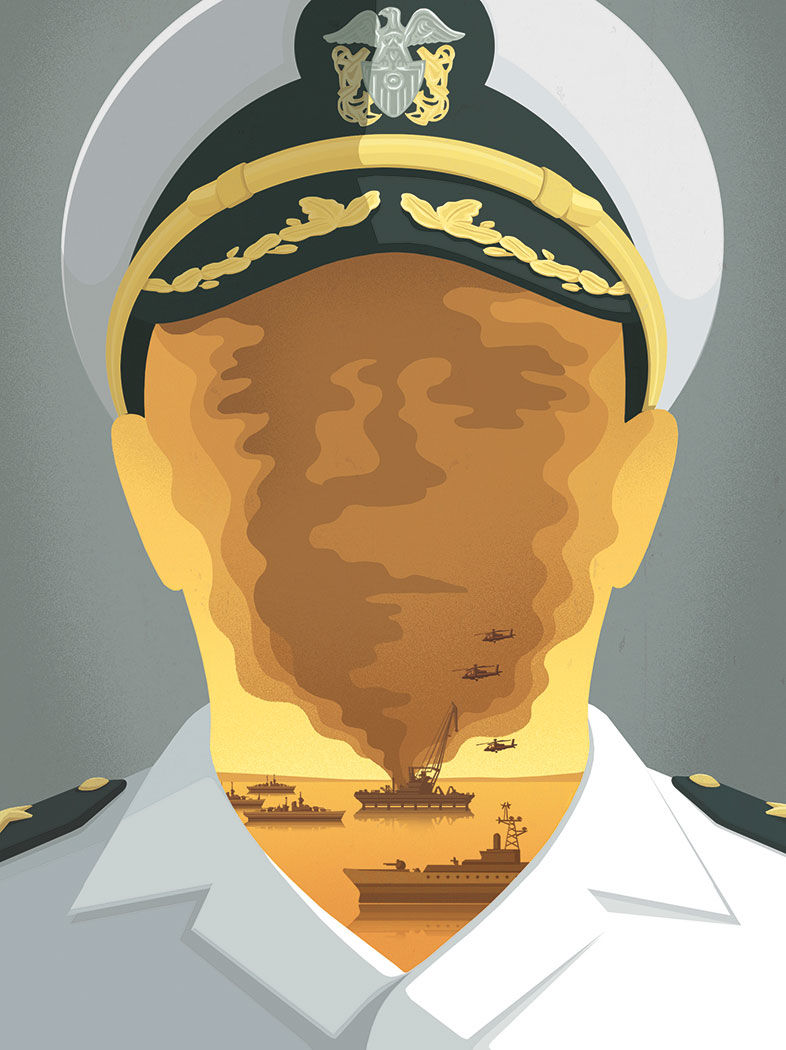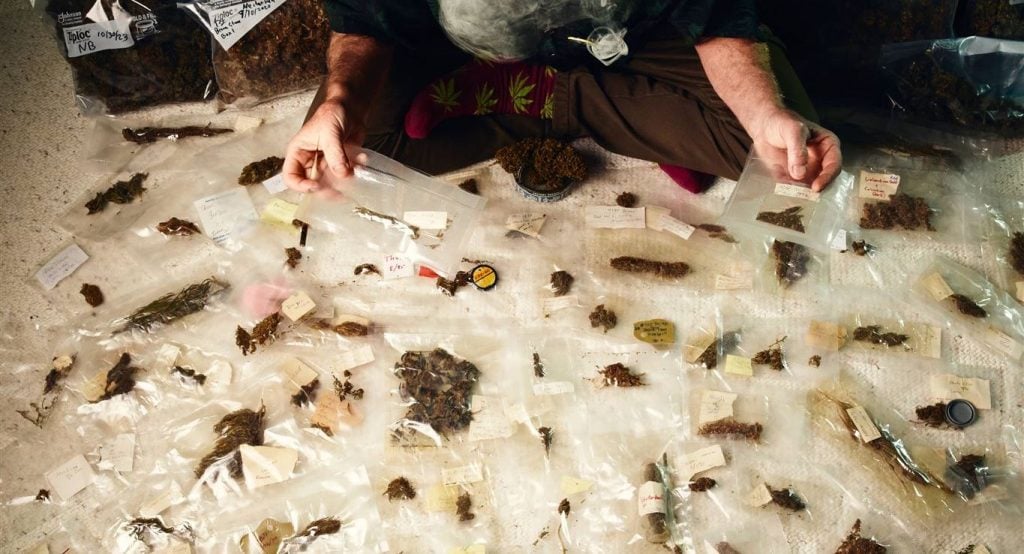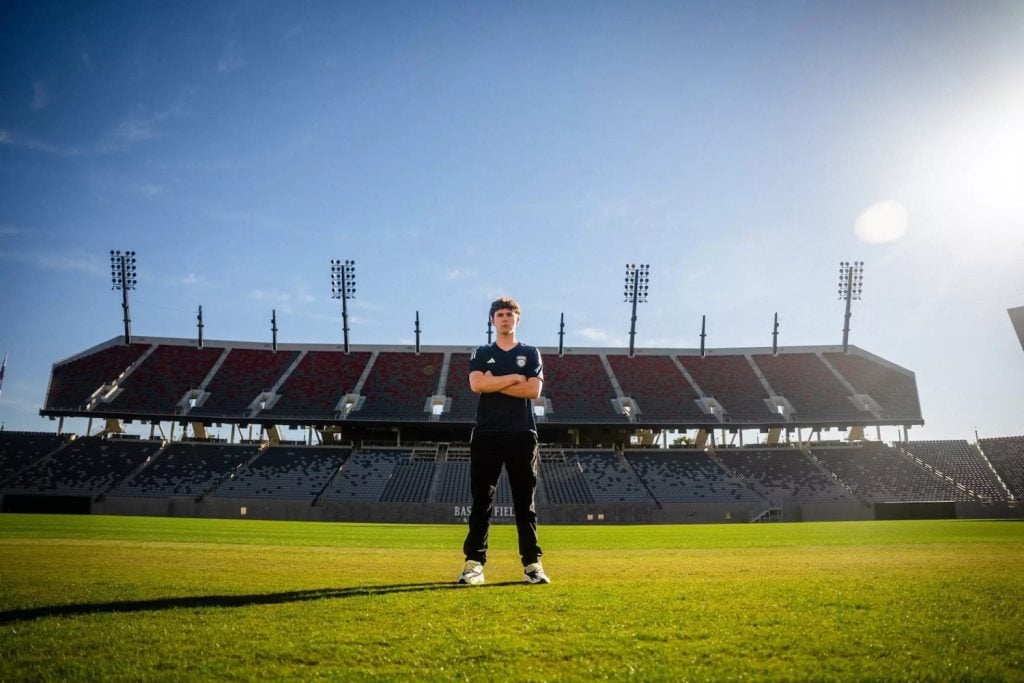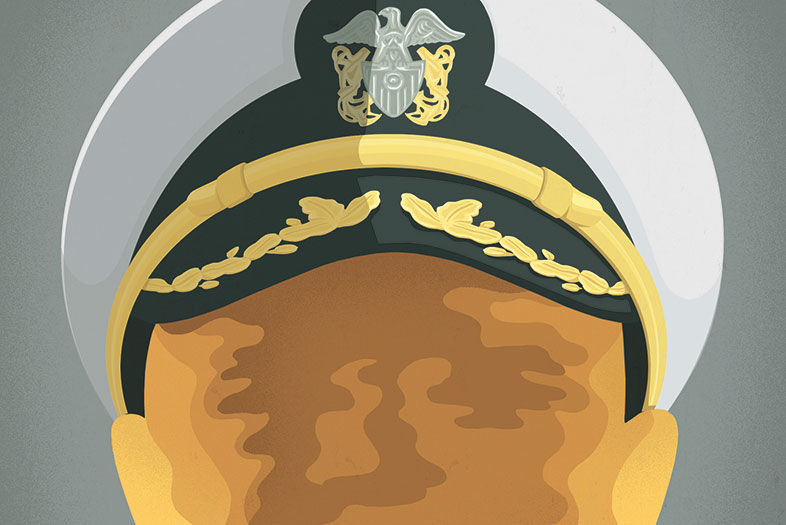
San Diegan Navy Commander Remembers Operation Earnest Will
Illustration by Stephan Schmitz
When Jerry O’Donnell first came to San Diego in 1969, he recognized it as a sailor town. “All the bars and tattoo parlors were downtown,” he recalls. “The tuna fleet was still there. I was a bachelor living in a Pacific Beach apartment near the water. We loved it.”
Life at the beach changed dramatically for him in 1987. Seven years into the Iran-Iraq War, Iranian forces began attacking oil tankers from Iraq’s primary financial beneficiaries, Kuwait and Saudi Arabia.
As commanding officer of the San Diego–based USS Thach, O’Donnell was sent to the Persian Gulf to stop the attacks against America’s allies. It was illegal for Navy ships to escort foreign civilian vessels, so Kuwaiti ships re-registered as American. Dubbed Operation Earnest Will, it became the largest naval convoy operation since World War II.
O’Donnell’s ship arrived in August 1987. One of their first escort missions was to transport Iranian prisoners who’d been caught planting mines aimed at US Navy ships.
“Iran threatened to sink our convoy,” O’Donnell says. Everyone on the ship was put into battle mode, ready for the worst.
There was only silence—except for the radio.
“It was alive with screaming cries for help from the master of a merchant ship under fire by an Iranian warship,” he recalls. “That set the tone for our time in the gulf.”
The Thach didn’t fire a shot until a late night two months later.
On October 8, O’Donnell sent a Thach helicopter to patrol south of Farsi Island, along with three Army Delta Force helicopters (nicknamed “Sea Bats,” because they flew on night vision devices and only after dark). “The helos came upon three boats manned by Iran’s Revolutionary Guards. They had large-caliber machine guns and US-made, shoulder-fired antiaircraft missiles.”
The Sea Bats were dark, but the Thach helicopter was flashing its anticollision lights (a standard safety practice). The Iranian boats saw the lights, and fired.
“The boats couldn’t see the Sea Bats, but the Sea Bats saw them and quickly attacked,” he says. “All three Iranian boats were sunk.” There were 14 Revolutionary Guards on those boats. Six were captured alive and flown 70 miles to a US amphibious ship to treat their wounds.
“Two of the six died,” O’Donnell says. “The other four were treated and handed over to Oman for return to Iran.”
After that night, his pilots flew with their collision lights off.
Recently declassified intelligence reveals more about that night. The Iranian boats had been part of a 20-boat “swarm” planning to attack Saudi oil facilities later that night.
“When those boats were sunk, the Iranian commander formed the rest of his boats to attack the barge Hercules,” O’Donnell remembers. “We brought Thach up to max speed and headed for them. The atmosphere was palpably tense. You could smell the fear. I remembered from Vietnam experience of my ship coming under fire that tense guys make mistakes, and some freeze up if they dwell on their fears.
“The column of Iranian boats appeared headed toward the barge at high speed. I got on the ship’s announcing system and said in the calmest voice I could muster, ‘There are some boats coming our way and we may be in for a fight. Do what you have been trained to do and we will be fine.’” But then, astoundingly, the boats disappeared from their radar. Believing he might’ve been heading into a trap, the Iranian commander had returned to Farsi Island.
Seven days later, the reflagged US tanker Sea Isle City was struck by an Iranian missile while at anchor near the oil terminal outside Kuwait.
“Seventeen crewmen and the American captain were injured in the attack,” he says. “Three days later, the Navy responded with Operation Nimble Archer. Four destroyers shelled two oil platforms in the Rostam oil field.”
After the shelling, O’Donnell sent in a SEAL platoon and a demolition unit.
“We took documents and radios for intelligence,” he says. “We blew up the antiaircraft guns and radar on the platform. The platform caught fire from the explosions, burned, and was heavily damaged.”
For the remainder of their time in the gulf, Thach had a Sea Bat onboard at all times. And though there were many more tense moments, it was the last violence O’Donnell saw.
Now retired from the Navy, Jerry O’Donnell lives in Virginia and works in the Warfighting Concepts department at Naval Station Norfolk.















